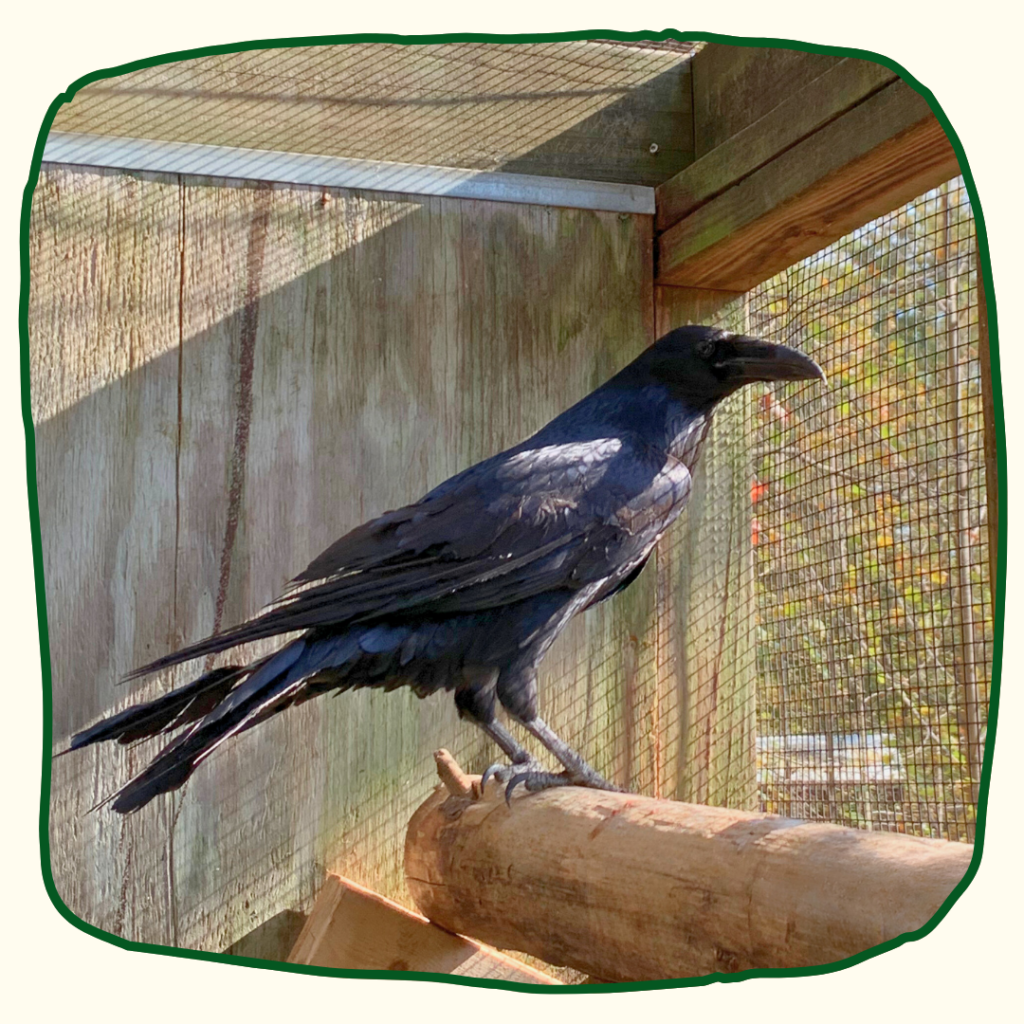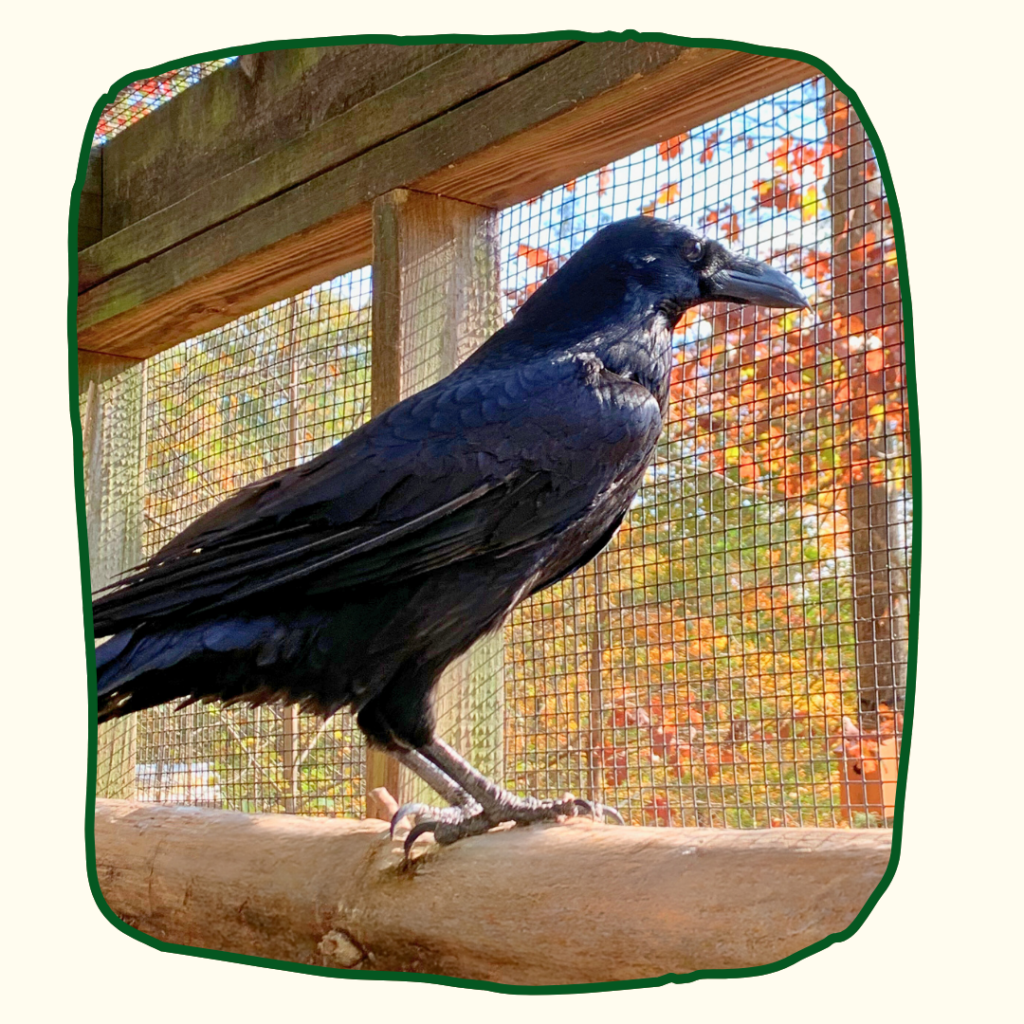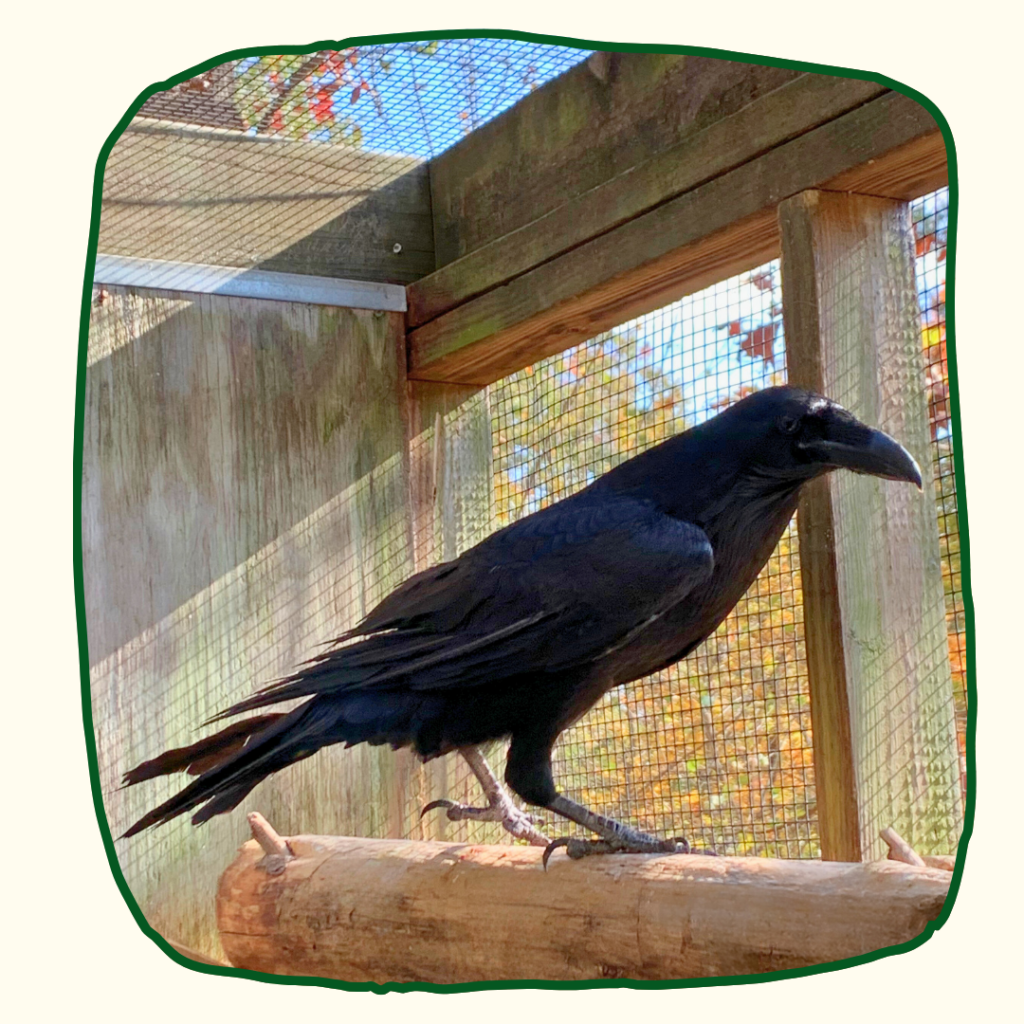Quoth the Raven, “Nevermore Feed me more!” 🖤
Our Patient of the Month this October is one of Edgar Allan Poe’s favorites: a Common Raven, known at RWS as patient 24-859. Fitting for spooOoOoOoky Halloween! 👻

This beautiful patient arrived at the Sanctuary this summer after being rescued from a forest fire in Clarke County a few months ago. He had been badly singed and many of his feathers were irreparably damaged. He has been unable to fly as a result and has been in safe, captive care as he heals. ⛑️
The journey of patient 24-859 shows just how collaborative wildlife rehabilitation truly is! He arrived at the Sanctuary after treatment from our friends at Wildlife Center of Virginia, following initial care by two different rehabbers in Clarke County. Sometimes, a patient requires multiple stops along the way, each rehabber contributing their unique expertise. Although our focus is on rehabilitating clinically healthy orphans, we often welcome adult animals who need longer-term care in a tranquil setting. Our rural, natural environment offers higher-stress patients like this raven the peaceful space they need to heal.

You might be wondering why this bird is still in care if he was rescued many months ago. It takes a surprisingly long time for birds to regrow their feathers if there has been serious trauma to multiple. Birds do naturally molt during the year, but if a feather has been broken or damaged, they cannot automatically molt that feather on command. Our best option to treat severely damaged feathers is often to provide a safe, healthy environment for that patient while we wait for its body to do its crucial recovery work through a natural molt. Depending on the species, a full molt for a larger bird like this may take six to eighteen months! 😲
Occasionally, birds with severe feather damage can be treated with a process called imping. While the bird is anesthetized, a trained veterinary professional can remove the damaged feathers and use a special glue to attach healthy donor feathers to the feather shaft. The donor feathers are usually taken from a previous molt or from former same-species patients that have unfortunately died. Wildlife care professionals like us have special “salvage” permits from the U.S. Fish and Wildlife Service to keep these protected feathers on hand for such instances. 🪶

Ravens are astoundingly intelligent animals, making them a uniquely challenging species to care for. One study found that by four months old, young Common Ravens have cognitive abilities that parallel those of adult great apes! 🦍 Ravens can solve puzzles, plan for the future, hold a grudge, and use tools. As a result, our rehab team must provide daily enrichment to help keep this smartypants occupied. 🧠 Whether it be food puzzles, novel “furniture” in his enclosure, interesting new hanging toys, mirrors, or other additions, we know that a successful rehab program for this patient must keep him on his toes — uh, talons.
Enjoy this video below of 24-859 interacting with yesterday’s enrichment: a toilet paper tube stuffed with treats and squished closed, then shut inside of Tupperware. Though he cracked it open quickly, he spent the next few hours exploring the components and the treats inside while caching them around his enclosure. These are exactly the kinds of behaviors we want to see! 💗
We hope this month’s Patient of the Month has inspired you to get spooky tonight and have a safe, fun Halloween! 🎃
If you or any family members are dressing up as critters, please tag us on social media! We love seeing our community celebrate wildlife in new creative ways. 📸
October 31, 2024
Published:
Be the first to comment!